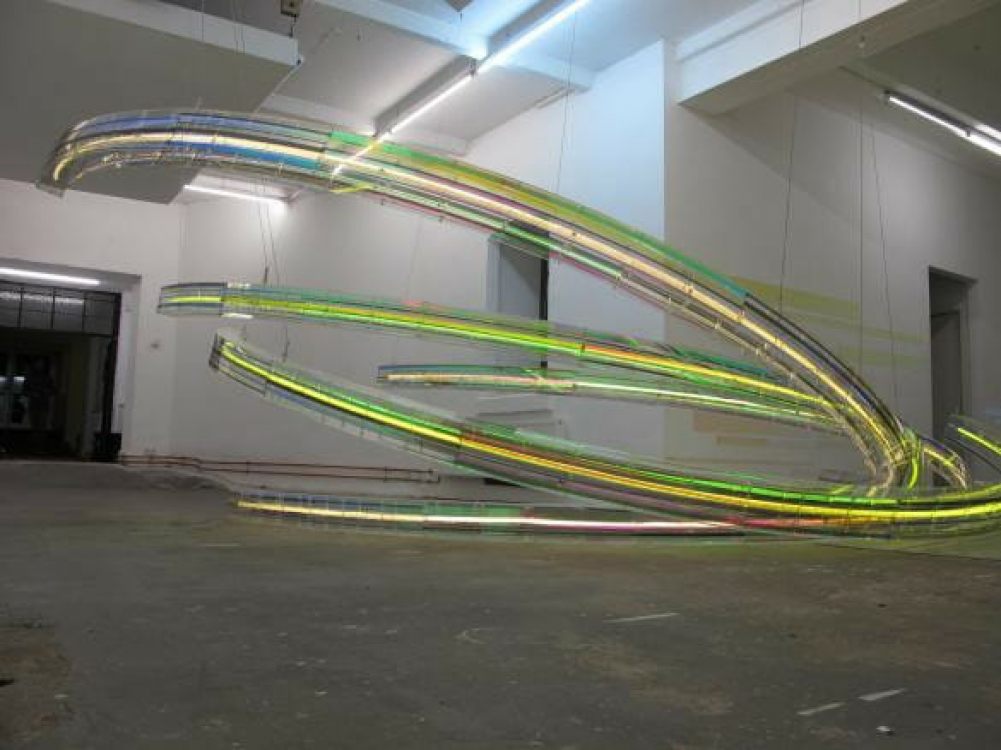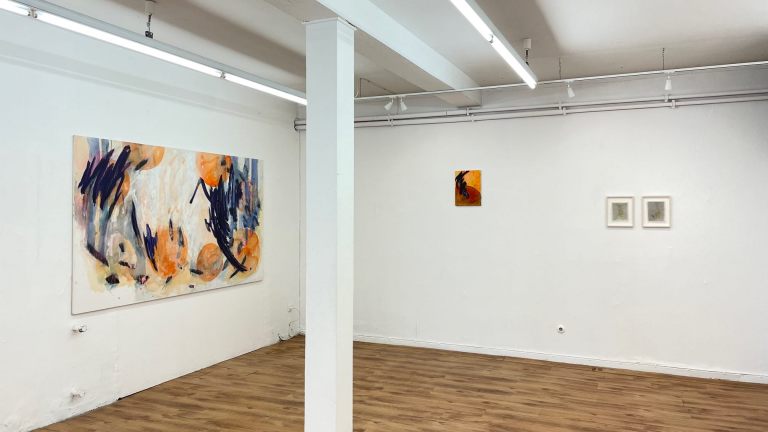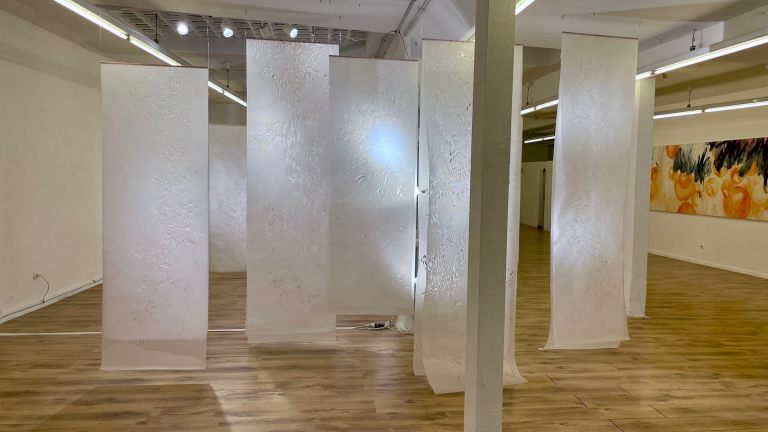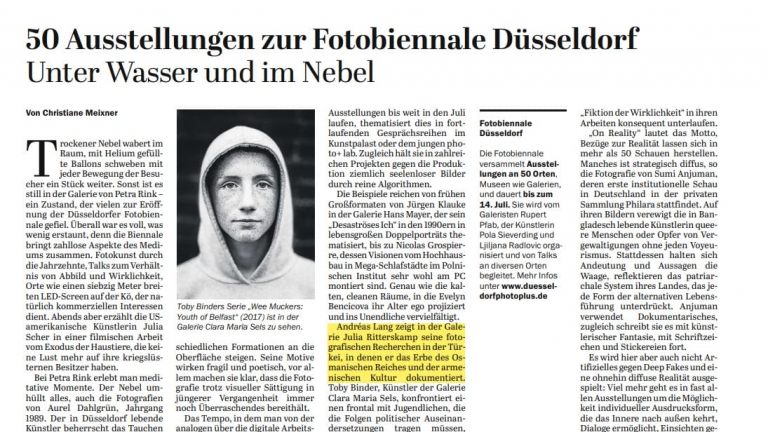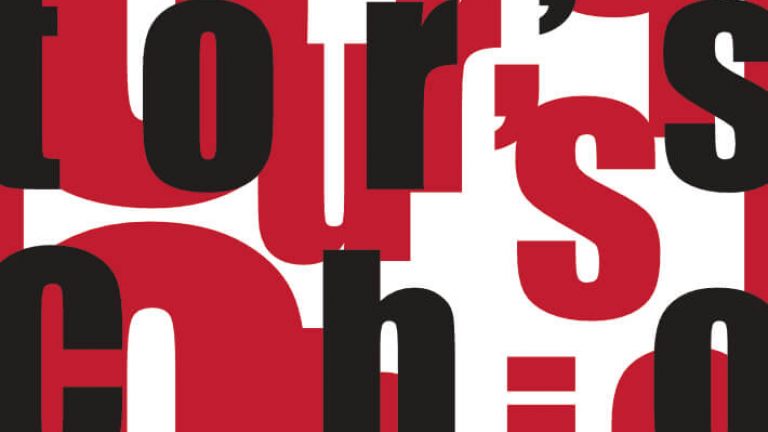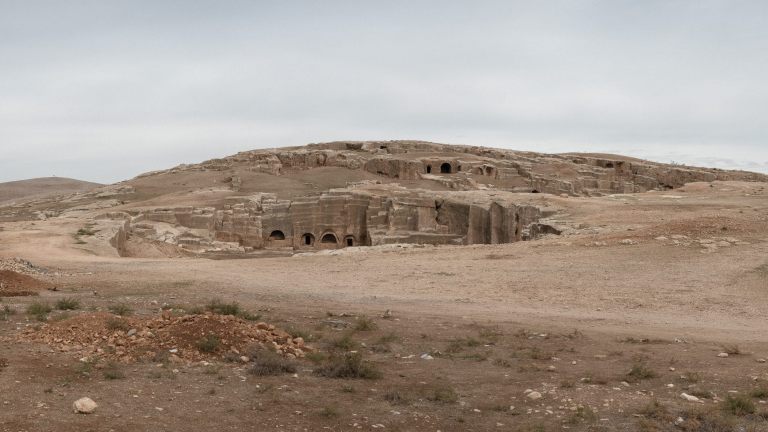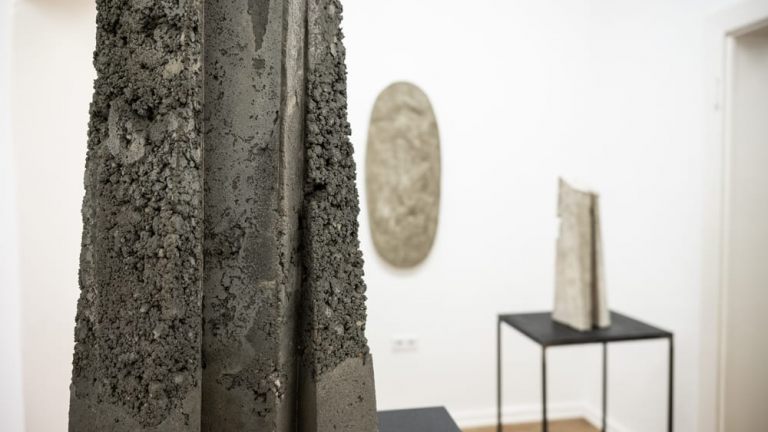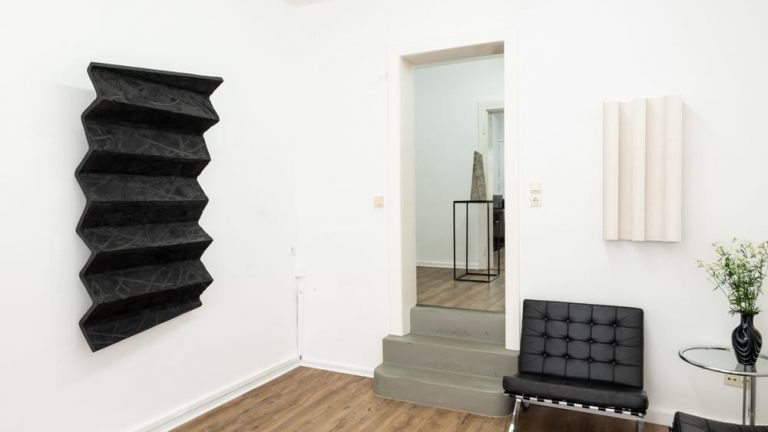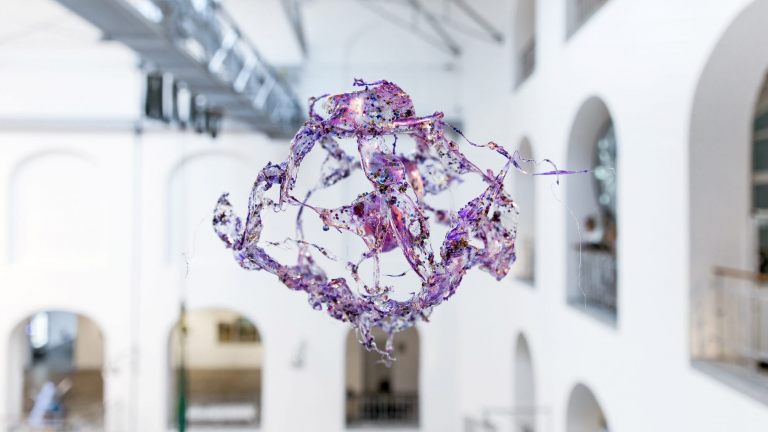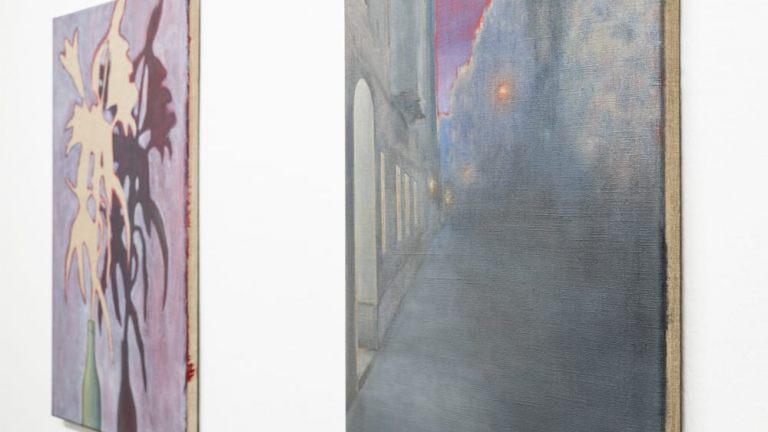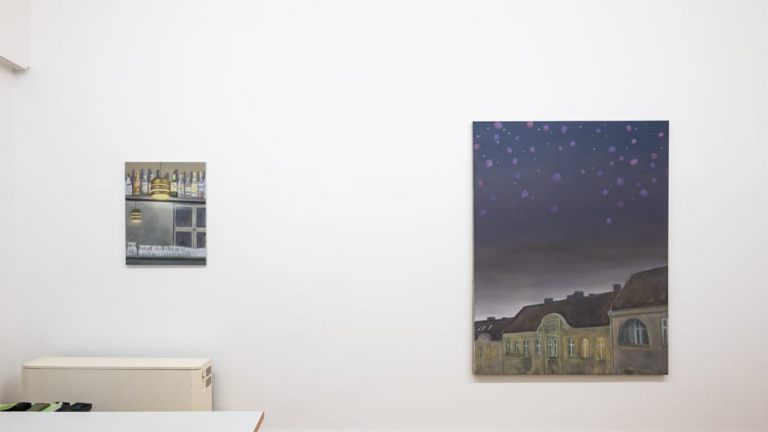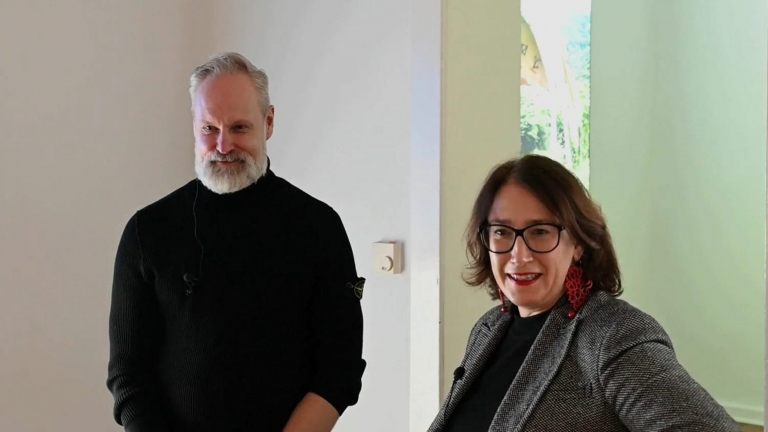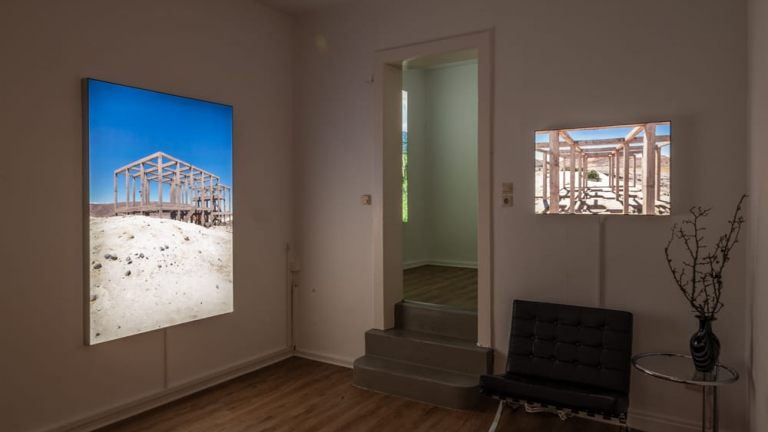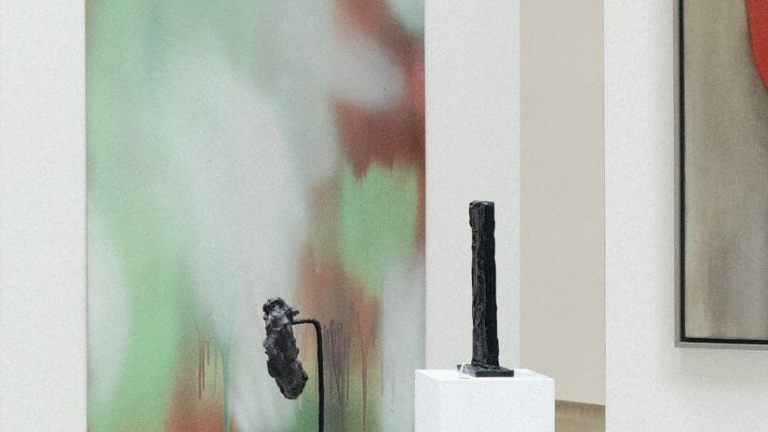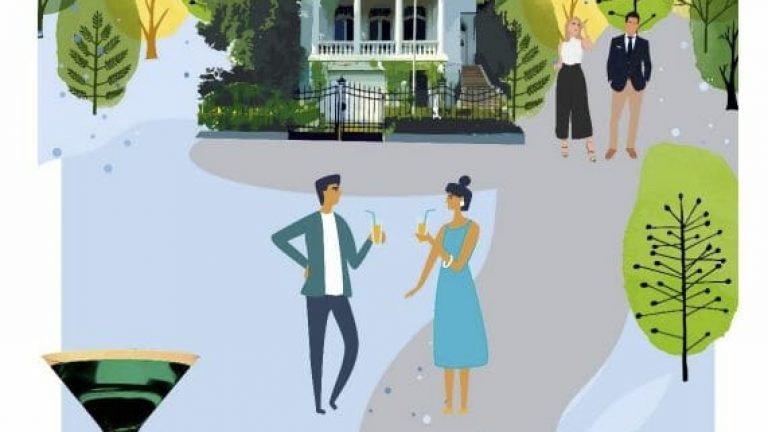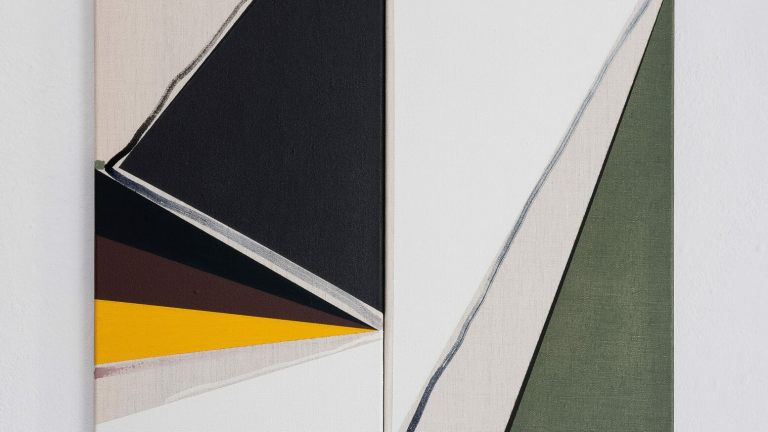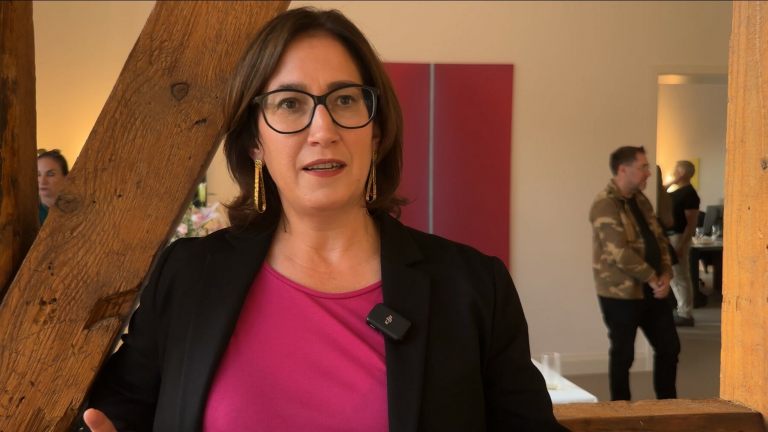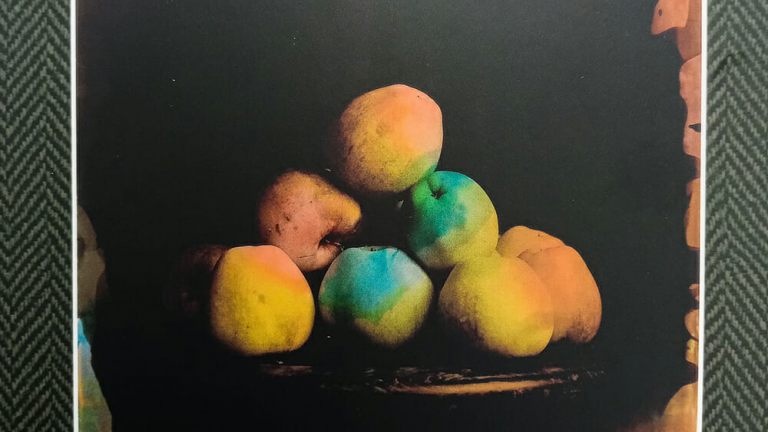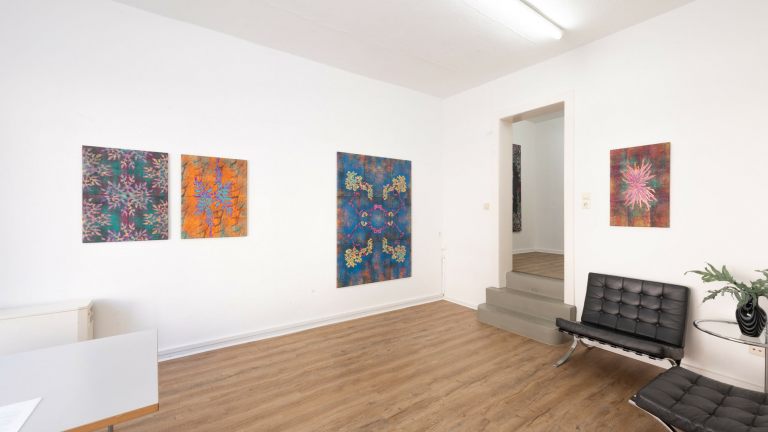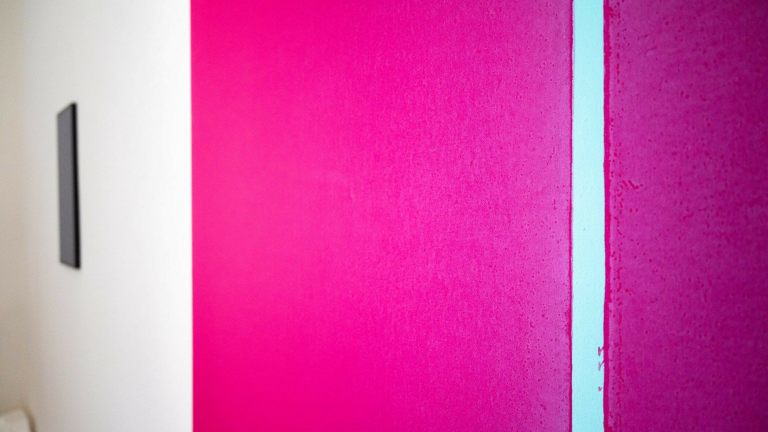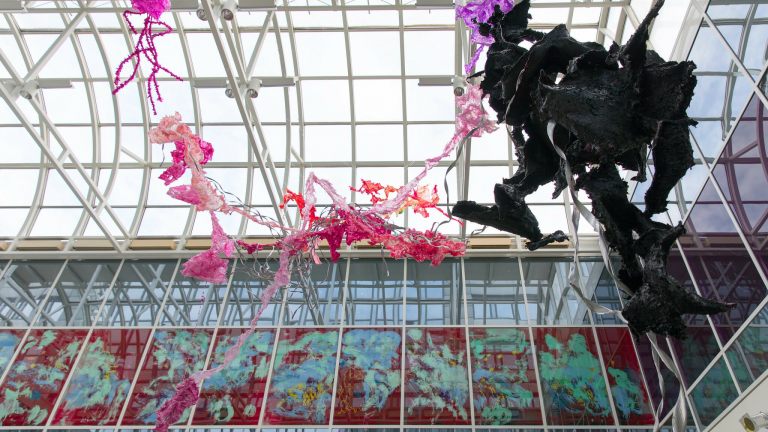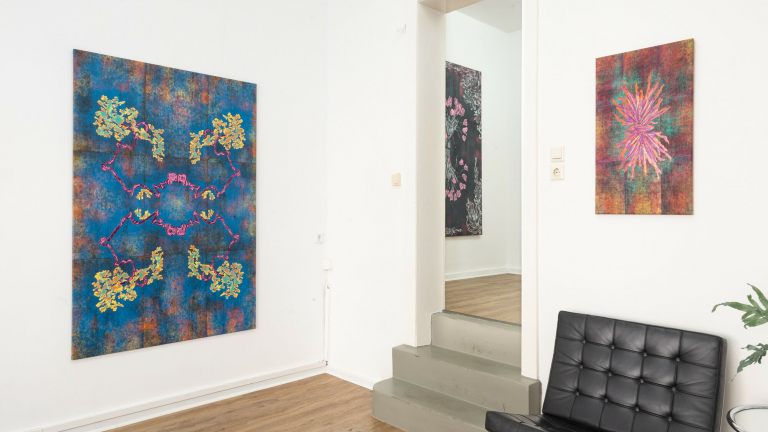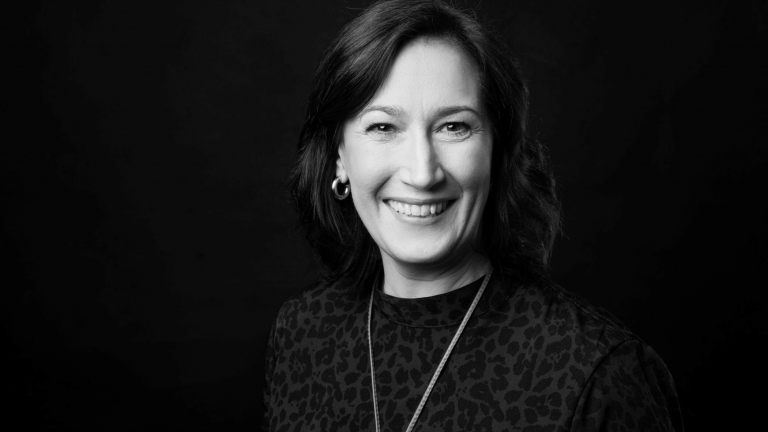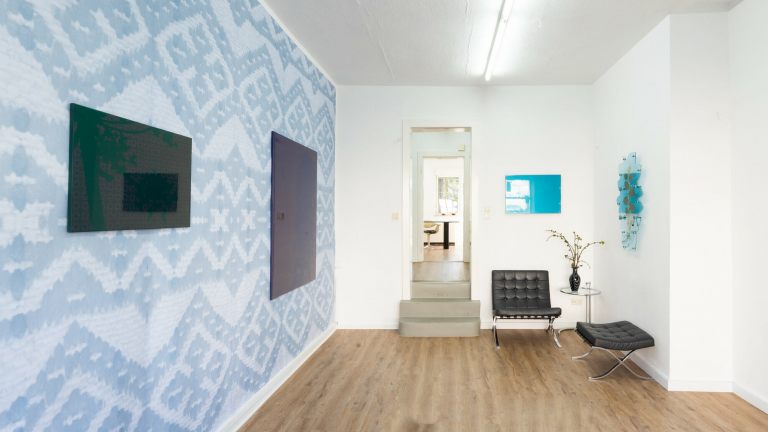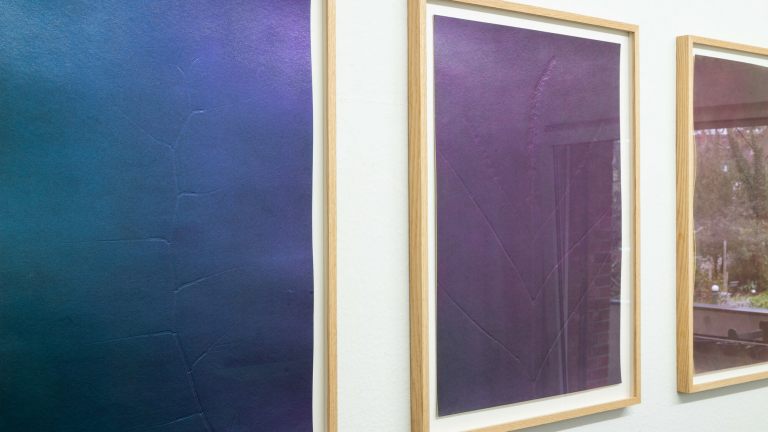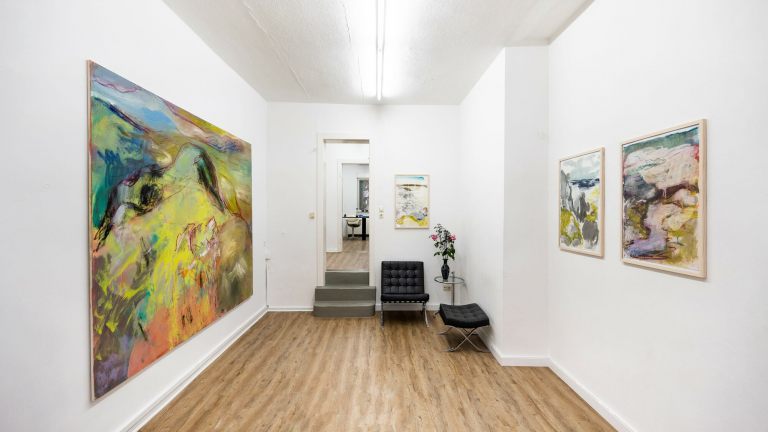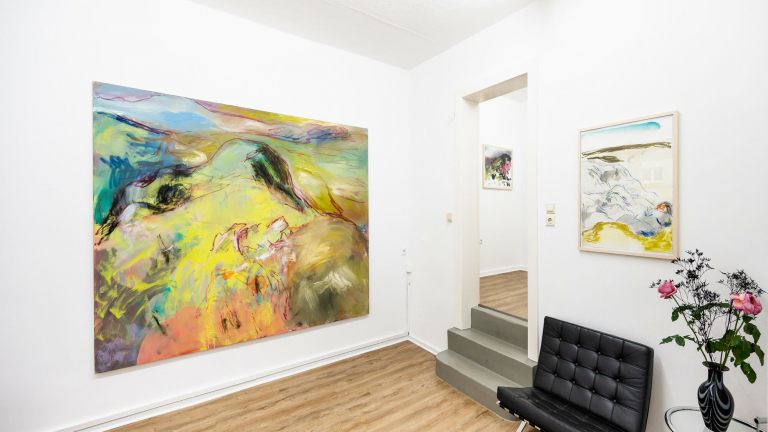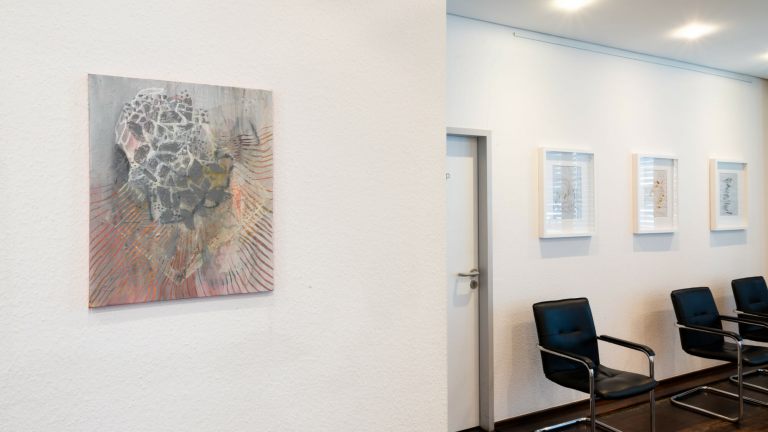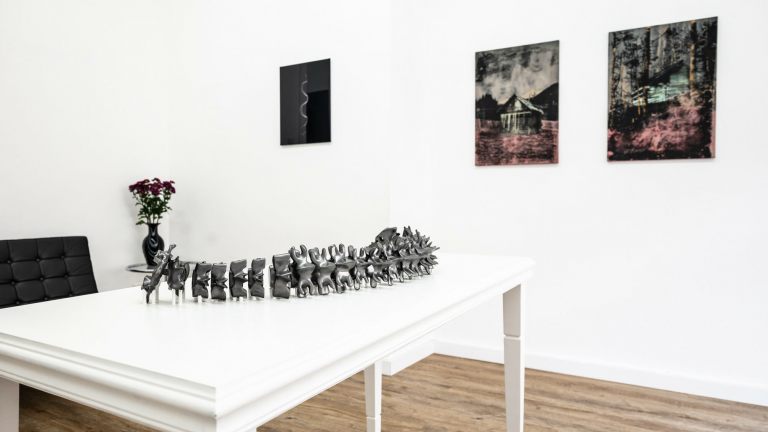Lecture
Susanne Rottenbacher - Whiplash in the Dark
10.10.2014, 19-19:30 Uhr
Galerie Teapot, Herwarthstraße 3 • Köln
Susanne Rottenbacher
WIPLASH IN THE DARK
Why does an artist do that to herself? That’s the question that inevitably arises when one immerses oneself deeper into the technical questioning and lengthy experiments which - with all their “Trial & Error” - belong to the everyday work of Susanne Rottenbacher. The question however is answered at once when seeing one of her exhibitions or public sculptures: technical challenges and the effort to succeed in eventually overcoming them, disappear behind the magic of the result.
For some, an analogy with ballet may come to mind: at the premiere, the struggle and agony necessary to achieve the greatest possible perfection should under no circumstances be apparent; everything must seem easy and natural. Via this analogy with ballet one arrives – light-footed, so to speak – at a theory dating the emergence of lightart to the year of 1892. Back then, the American dancer Loïe Fuller made her debut in Paris with a choreography making her a living lightsculpture. “I form light”, stated Fuller and postulated art as an aesthetic parallel world. Of course, Susanne Rottenbacher has a very different way of working artistically. But still, the desire for something transgressional is a decisive impetus here, too. As her medium she chooses light, because it is matter and energy at the same time. Light stimulates life and then again is dead mass in its particle form; it seems both physical and metaphysical at the same time. A nice parallel to the aforementioned contrary properties of light is the effect which arises from the inclusion of the surrounding space – which is characteristic for Susanne Rottenbacher: the borders of the singular artwork are dissolved through light but the artwork nevertheless stays a self-contained thing.
The acrylic objects, in which LED lights are arranged, are both transparent and coloured at the same time, in parts shimmering pearlescently, so that in the case of the latter, viewers and surroundings are being reflected. The apparent contradiction of – at the same time - transparency and autonomous colourfulness is another analogy to the ambivalent properties of light itself.
The works integrate changing surroundings and thus take on different manifestations depending on the time of day, changes in light, surroundings, viewers. The appearances of the single objects are extended infinitely. As a result, the exhibition displays an overarching sculptural choreography of space composed and consisting of different components and elements.
People generally need something visible to intuit the transcendental. It is a primeval need to create the transcendental with real means. The lit-up rings, which are continually present in works by Susanne Rottenbacher, can be associated with many things: from Romanesque chandeliers, portraying the celestial Jerusalem up to UFOs. In any case, the works involve the viewer – actually and figuratively. They encircle the viewer, surround the viewer and invite the viewer into another world. Light, as an artistic medium, is therefore a logical choice: in the majority of religions and customs it stands for life, salvation, enlightenment, renewal. Could one - on the strength of this tradition - say that lightart is a democratic art? It at least doesn’t leave anyone “in the dark”. It’s not about decoding content on the basis of an elaborate level of education, but rather about individual and direct perception.
Susanne Rottenbacher’s light installations display an absolute mastery of craftsmanship. She studied stage design at Barnard College, Columbia University in New York and light at the Bartlett School of Architecture and Planning in London. Whether it’s about large-scale public artworks, or in contrast small-scale single light sculptures: at all times a stage opens up for the viewer, at all times the whole spatial situation changes radically through the artistic intervention. The choice of colour tones, the degree of transparency, size, form and type of light transform the entire atmosphere of public buildings and green spaces, as well as private households and gardens. And - alongside all the amazement about the aesthetic – activate the spectators to review their connection to themselves and things in general.
Without doubt, also the French artist Bernar Venet is master of the big stage as well as the special situation of outside sculpture with monumental sightlines. Susanne Rottenbacher has dedicated to him her extensive installation consisting of five arches: Colours in disorder, a tribute to Bernar Venet. The title plays with Arcs in Disorder, Venet’s steel sculpture made of several open circles. However, whereas sculptures made of traditional materials require light to be thrown onto them, Rottenbacher’s works light from the inside out. An ephemeral dialogue between the outside and the inside light emerges, unhampered by the “border” of transparent acrylic glass.
A new freedom in forming and design is granted here by the application of a special tube in which the LED dots disappear, producing a smooth and consistent light rather than discontinuous points of light. It enables Susanne Rottenbacher to write with light. She goes beyond the mostly conceptually grounded use of neon that emerged in art at the end of the 1960s (examples of which are Merz, Morellet, Nauman, Holzer) in so far as the writing is not clearly defined, but rather visualised as freely swinging sweeps through space.
Freedom is an apt keyword here and was already the title of the artist’s spectacular solo show in 2012 in Christuskirche, Cologne. Let’s move from the confinement of the printed letter to a free contemplation and unlimited experience of Susanne Rottenbacher’s installations!
Julia Ritterskamp, October 2014
